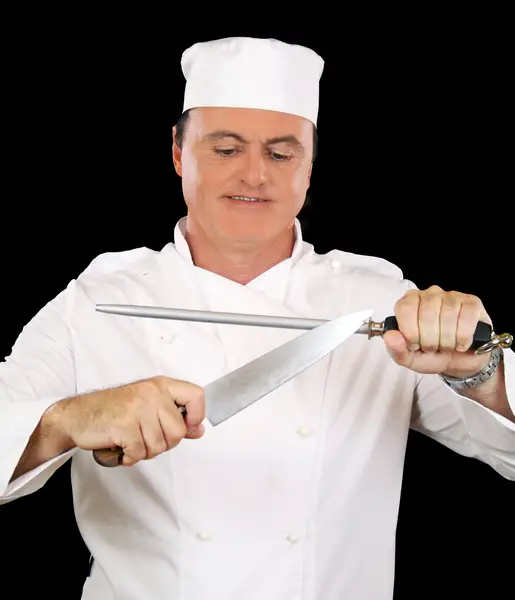How do professional chefs make it look so easy? They take a piece of meat and slice through it like butter. They cut an onion into beautiful, slender slices.
What do they have that you haven’t got? Sure, they have professional training and years of experience. But if they aren’t using a good knife, they’d have as much trouble as anyone else in the kitchen. The fact is, a bad knife makes it a pain in the neck to cook. Now, here’s the good news.
It doesn’t cost a lot of money to buy a great knife. But first, you need to forget what you might think you know about good knives.
First, forget about those knife sets that come in a block with slots. You wind up with a lot of knives, none of which do just you want when you reach for one. Sets are inevitably a waste of money, space, and material.
(Actually, there is one great surprise use for a really cheap knife set. I’ll reveal that closer to the end of this article.)
Instead, shop for each knife that you want — when you want it.
There’s a good chance that if you select the knives that are right for you, they won’t be made by the same company. There’s no reason they need to be. Different companies make different sizes and styles, with different shapes of handle and blade depending on what the individual knife size and type is. Find the knife that fits your hand and your style, at that particular shape. There’s an excellent chance you’ll be most comfortable with one company’s paring knife, and another company’s chef knife.
After all, what’s the benefit of having all the handles have the same little logo, if it means you enjoy using one of them less than the other?
Your knives should be as follows: Not serrated. Not scalloped. A long length of the cutting edge must be a straight line. The cutting edge should not be, overeall, an arch, which can only rock against the board, and never give you a satisfying throughline. Made of steel. Not ceramic. Avoid cheap knives with little carbon in them. The metal is too soft, and won’t hold an edge.
If you’re building up your kitchen, you only need two knives. Make sure each one is excellent, and make sure you always keep it sharp.
Your first must have: a 6″ or 8″ chef knife. This is the type where the blade is shaped like a wedge.
Second, get an excellent 3″ paring knife.
What’s wrong with all those other knife shapes and sizes? Nothing. Get more knives. Knock yourself out. We have dozens of great knives. Because we’re nuts about kitchen equipment — we can’t get enough. If we could only have two, though, they would be one 6″ or 8″ chef knife and one 3″ paring knife.
You need one more piece of equipment to go with your knives: A bamboo or wood cutting board. Please don’t use a plastic board. It blunts your knife every time the blade hits it. And that the blade is more liable to slip on. Plastic harbors more bacteria, anyway. Yes, that’s the science.
You can easily pay over $100 for a good chef knife. J.A. Henckles and Wusthoff have great reputations, for example. We bought our Wusthof 6″ chef knife for $120 nearly 25 years ago, and it’s been put to hard use nearly every day since. It still looks brand new. But here’s a secret: restaurant professionals use Victorinox knives, and you can pay less than $40 for a great one.
Here’s the trick to finding one of those. Find your nearest restaurant supply store. They usually have a lollipop style rack near the counter where you can pick up one or two of these for a few dollars.
So find a hefty, beautiful chef knife you love. Find a darling paring knife you love. Buy a nice bamboo board to go with them. You may well encounter more excellent knivew allon the way, too.
Oh, remember my promise about what you can do with a cheap knife block set? I’m talking the kind you might find for $10 or less. Try this hack: take it home, then remove all the knifes and take them to the thrift store. Use the block to put your good knives in

